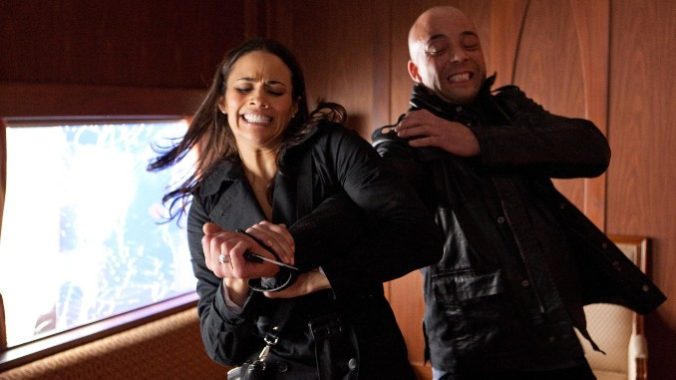The Effortless, Expendable Women of Mission: Impossible
Photo by Doug Curran / Paramount Pictures
Ethan Hunt is back with the latest addition to the Mission: Impossible franchise, Dead Reckoning—Part One. While the series has long been a favorite with critics and audiences alike, over the past decade or so, it’s evolved into a cinematic titan far beyond its initial ambitions. With each installment, Tom Cruise’s pet project is making more money, executing grander setpieces, and setting a new standard for the action genre. We go to Mission: Impossible primarily for Cruise, who is doing the kind of stunts and old-school movie-star grandeur that is in short supply in the franchise era of Hollywood. It’s truly thrilling to watch such a familiar face throw himself from buildings, cling to the sides of planes, and weave motorcycles through the busy streets of cosmopolitan cities. Seven movies in, it’s now something of an accepted norm for fans that the plots are superfluous, mere stages for Cruise to do his thing. Yet the dressing of those Mission: Impossible sets has offered some interesting and underrated opportunities for a variety of women to shine.
Mission: Impossible has been a movie mainstay for close to 30 years, and throughout the decades, it’s offered a sharp variety of female characters whose presences are crucial to the various arcs. Actresses as varied as Thandiwe Newton, Lea Seydoux, Maggie Q, Emmanuelle Béart, Angela Bassett and Vanessa Redgrave have gotten to make their mark on this franchise. They’re frequently stealing the show from Cruise, setting fun new standards for women in this sausage fest of a genre. And the M:I series does so with the lightest of touches.
It’s in the mundanities of these women that a sliver of the radical lies. It’s rare to see one blockbuster have multiple female characters who are strong, capable and not reduced to props, let alone do so over the course of seven films. These women are agents and enemies alike, as crucial a component of the oft-tangled narratives as the action scenes, and they also get to kick just as much ass as anyone else. When you consider how long it took the Marvel Cinematic Universe to get its heroines front and center, or decades of archaic Hollywood logic claiming there’s no audience for such characters, it’s notable how Mission: Impossible just got on with it, no fuss or muss.
That may not seem like much, but it’s worth remembering how pathetically low the bar is for both the American film industry and the action blockbuster genre in terms of allowing women to be people. We’re all familiar with those bro-down, guns a-blazing explosion demonstrations where the sole female character is a damsel with all the autonomy of a sexy lamp. Rare villainesses are frequently styled like bikini models, while the spouses who stay at home are bitches, nags, pushovers or some curious combination of the three. Mission: Impossible is not immune to tropes, but there are layers present nonetheless. Consider Max, the main antagonist of the first film, played by Vanessa Redgrave. An illegal arms dealer who has been conducting business with a mole located within the Impossible Mission Force (IMF), Max is erudite, cunning and enjoys toying with her underlings. She becomes an unlikely ally of Ethan for a while, but her loyalties are obscured, and her interactions with him are always tinged with suspicion. Max is the sort of role that is typically defaulted to male, so seeing Dame Redgrave, who was close to 60 at the time, mastering this villain is a simple change that makes a major impact. (She also has some of the sharpest sexual chemistry with Cruise, something he’s not always known for in this series!)
-

-

-

-

-

-

-

-

-

-

-

-

-

-

-

-

-

-

-

-

-

-

-

-

-

-

-

-

-

-

-

-

-

-

-

-

-

-

-

-








































